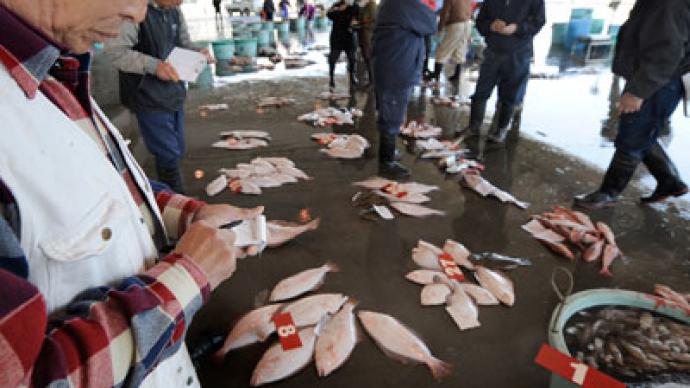Fukushima fish contamination raises fears of ongoing radiation leak

Fish caught off the coast of Japan following the Fukushima nuclear disaster are still contaminated, bringing speculation that leakage from the reactors has not been fully stopped. If true, it could threaten area marine life for decades to come.
A recent article in Science reveals that 40 per cent of bottom-dwelling marine species show cesium-134 and 137 levels above normal. In examining the data, collected by Japan's Ministry of Agriculture, Fisheries and Forestry, the article’s author Ken Buesseler, a marine chemist at the Woods Hole Oceanographic Institution in Massachusetts, discovered that the levels of contamination in most fish have not declined a year after the March 2011 tragedy. August samples of bottom feeders had cesium levels some 250 times the level the Japanese government considers safe.“The numbers aren't going down. Oceans usually cause the concentrations to decrease if the spigot is turned off,” Buesseler told the Associated Press in an interview. “There has to be somewhere they're picking up the cesium.”“Option one is the seafloor is the source of the continued contamination. The other source could be the reactors themselves,” he said.Radioactive cesium is a human-made radioactive isotope produced through nuclear fission of the element cesium. It has a half-life of 30 years, making it extremely toxic.Contaminated fish have a huge impact on the Japanese population, as the country ranks highest among per capita consumption of seafood. Most marine species from the Fukushima coastline are banned from the domestic market and export.But in July this year, Russia acknowledged that it faced a threat from fish caught off its coast near Japan.Speaking about the Fukushima disaster, Gennady Onishchenko, the head of Russia’s consumer protection agency, stressed that it is the “first time we have encountered a contamination threat from another state.”
In May, contaminated tuna reached as far as the California coastline of the United States.Japan has acknowledged that the number of contaminated catches was “extremely high,” but said it was detected only in the kinds of fish found closest to the plant. “We have yet to arrive at a situation that allows an overall lifting of the ban,” Chikara Takase, a government fisheries official, said.Tokyo Electric Power Co., Fukushima’s operator, has confirmed that radioactive water used to cool the plant’s reactors leaked into the ocean several times, most recently in April. “Given the 30-year half-life of cesium-137, this means that even if these sources were to be shut off completely, the sediments would remain contaminated for decades to come,” Buesseler wrote in the article. Other experts in the field support Buesseler’s study, adding that the plant will carry on contaminating the ocean until cracks and other damage to its three reactors are fully repaired. “The current levels of contamination in the fish and seafood from the Fukushima coast will continue for a while, perhaps more than 10 years, judging from the progress in the cleanup process,” Hideo Yamazaki, a marine biologist at Kinki University, told the AP.














